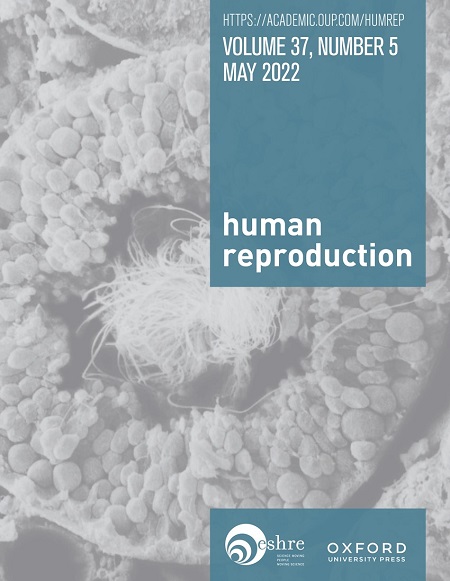基于人工智能的子宫内膜异位症组织学切片的组织分割和细胞鉴定
IF 6
1区 医学
Q1 OBSTETRICS & GYNECOLOGY
引用次数: 0
摘要
研究问题:我们如何才能最好地实现多通道染色子宫内膜异位症切片的组织分割和细胞计数,以了解组织组成?基于机器学习的组织分析软件用于组织分割,基于深度学习的算法用于独立于分割的细胞识别,这两种算法的结合在子宫内膜异位症切片的自动组织学分析中显示出很强的性能。子宫内膜异位症的特点是各种细胞类型的复杂相互作用,并且在患者和子宫内膜异位症亚型之间表现出很大的差异。研究设计、大小、持续时间在手术中获取8例不同亚型子宫内膜异位症患者的组织样本。子宫内膜异位症组织采用福尔马林固定,石蜡包埋,切片,免疫组化染色。6-plex免疫荧光板结合核染色建立标准化方案。这个面板可以区分不同的组织结构和分裂细胞。采用基于人工智能的组织和细胞表型分析自动分割各种组织结构并提取定量特征。由pank、CD10、α-SMA、calretinin、CD45、Ki67和DAPI组成的子宫内膜异位症特异性多重因子组能够区分子宫内膜异位症的组织结构。虽然机器学习方法能够可靠地分割组织亚结构,但对于细胞识别,基于无分割的深度学习算法更优越。目前的分析是在有限数量的样品上进行的,以建立方法。为进一步细化,应纳入富胶原无细胞区定量,进一步加强对纤维化改变程度的评估。此外,该方法应应用于更大数量的样本,以描绘亚型特异性差异。研究结果的更广泛意义我们证明了将多重染色和细胞表型相结合用于子宫内膜异位症研究的巨大潜力。多路面板的优化程序是从一个癌症相关项目转移过来的,证明了该程序在癌症背景之外的稳健性。该面板可用于大批量分析。此外,我们证明了基于深度学习的方法能够对不属于训练集的组织类型进行细胞表型分析,强调了该方法在异质子宫内膜异位症样本中的潜力。研究经费/竞争利益所有经费均由部门拨款提供。作者声明没有利益冲突。试验注册号n / a。本文章由计算机程序翻译,如有差异,请以英文原文为准。
Artificial intelligence-based tissue segmentation and cell identification in multiplex-stained histological endometriosis sections
STUDY QUESTION How can we best achieve tissue segmentation and cell counting of multichannel-stained endometriosis sections to understand tissue composition? SUMMARY ANSWER A combination of a machine learning-based tissue analysis software for tissue segmentation and a deep learning-based algorithm for segmentation-independent cell identification shows strong performance on the automated histological analysis of endometriosis sections. WHAT IS KNOWN ALREADY Endometriosis is characterized by the complex interplay of various cell types and exhibits great variation between patients and endometriosis subtypes. STUDY DESIGN, SIZE, DURATION Endometriosis tissue samples of eight patients of different subtypes were obtained during surgery. PARTICIPANTS/MATERIALS, SETTING, METHODS Endometriosis tissue was formalin-fixed and paraffin-embedded before sectioning and staining by (multiplex) immunohistochemistry. A 6-plex immunofluorescence panel in combination with a nuclear stain was established following a standardized protocol. This panel enabled the distinction of different tissue structures and dividing cells. Artificial intelligence-based tissue and cell phenotyping were employed to automatically segment the various tissue structures and extract quantitative features. MAIN RESULTS AND THE ROLE OF CHANCE An endometriosis-specific multiplex panel comprised of PanCK, CD10, α-SMA, calretinin, CD45, Ki67, and DAPI enabled the distinction of tissue structures in endometriosis. Whereas a machine learning approach enabled a reliable segmentation of tissue substructure, for cell identification, the segmentation-free deep learning-based algorithm was superior. LIMITATIONS, REASONS FOR CAUTION The present analysis was conducted on a limited number of samples for method establishment. For further refinement, quantification of collagen-rich cell-free areas should be included which could further enhance the assessment of the extent of fibrotic changes. Moreover, the method should be applied to a larger number of samples to delineate subtype-specific differences. WIDER IMPLICATIONS OF THE FINDINGS We demonstrate the great potential of combining multiplex staining and cell phenotyping for endometriosis research. The optimization procedure of the multiplex panel was transferred from a cancer-related project, demonstrating the robustness of the procedure beyond the cancer context. This panel can be employed for larger batch analyses. Furthermore, we demonstrate that the deep learning-based approach is capable of performing cell phenotyping on tissue types that were not part of the training set underlining the potential of the method for heterogenous endometriosis samples. STUDY FUNDING/COMPETING INTEREST(S) All funding was provided through departmental funds. The authors declare no competing interests. TRIAL REGISTRATION NUMBER N/A.
求助全文
通过发布文献求助,成功后即可免费获取论文全文。
去求助
来源期刊

Human reproduction
医学-妇产科学
CiteScore
10.90
自引率
6.60%
发文量
1369
审稿时长
1 months
期刊介绍:
Human Reproduction features full-length, peer-reviewed papers reporting original research, concise clinical case reports, as well as opinions and debates on topical issues.
Papers published cover the clinical science and medical aspects of reproductive physiology, pathology and endocrinology; including andrology, gonad function, gametogenesis, fertilization, embryo development, implantation, early pregnancy, genetics, genetic diagnosis, oncology, infectious disease, surgery, contraception, infertility treatment, psychology, ethics and social issues.
 求助内容:
求助内容: 应助结果提醒方式:
应助结果提醒方式:


